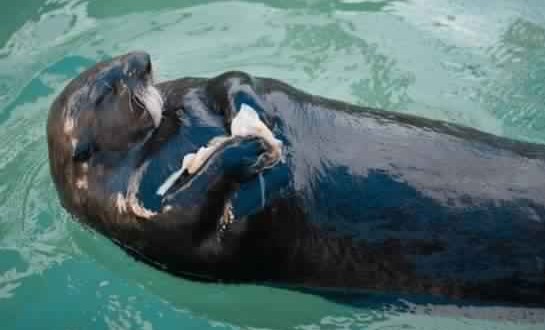An adult male sea otter that was found badly injured is now in the care of the Vancouver Aquarium.
The rescue crew caught the sea otter with a net and transported him to Vancouver on Thursday after he was spotted floating, looking very bloated and unable to dive near Vargas Island.
Head veterinarian Dr. Martin Haulena said in a statement that the otter – the scientists decided to call him Corky in reference to how he was floating – suffered a fractured rib and collapsed lung that caused subcutaneous emphysema, or air trapped underneath his skin. The injuries appear to be from blunt force trauma, likely caused by a boat.
“The real problem for this guy was because of the excess air, he couldn’t dive or forage and would have starved,” Haulena said.
The vets are giving the otter regular meals and pain management. They’re also checking for any conditions that would have made it easier for a boat to hit Corky, including algal toxicity or an infection.
“We’re doing everything we can to ensure he has the best chance for a successful rehabilitation for the eventual release back into local waters,” Haulena said.
Fisheries and Oceans Canada, Orca Airways, Tofino Coast Guard, B.C. Ferries and the Strawberry Isle Marine Research Society all helped in the rescue.
Fisheries and Oceans Canada has the final say on whether Corky will ever be released into the wild.
Agencies/Canadajournal
 Canada Journal – News of the World Articles and videos to bring you the biggest Canadian news stories from across the country every day
Canada Journal – News of the World Articles and videos to bring you the biggest Canadian news stories from across the country every day



